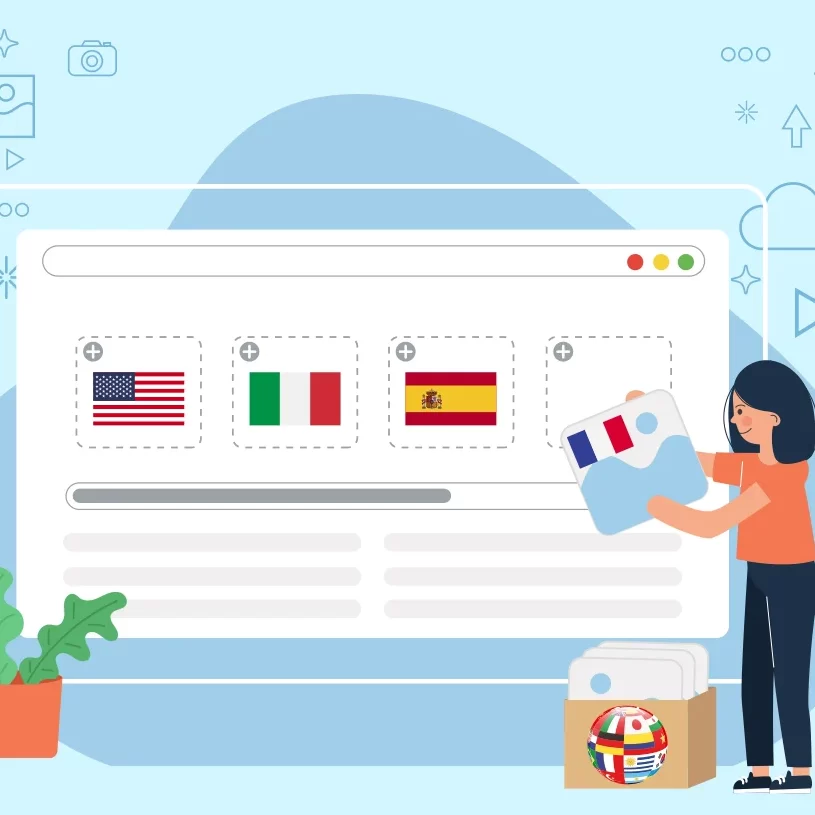Table of Contents
Within the ever-expanding scene of e-commerce, businesses are always looking for ways to broaden their reach and tap into new markets. One of the foremost viable techniques for accomplishing this objective is through multilingual e-commerce websites. In any case, deciphering item portrayals without thought for social subtleties or phonetic contrasts can lead to ineffectual communication and missed openings. In this article, we will investigate the significance of optimizing item portrayals for multilingual e-commerce websites and give viable tips for doing so viably.
Why Multilingual Product Descriptions Matter

- Enhance Accessibility: By advertising item depictions in different dialects, e-commerce businesses can make their items more open to a worldwide group of onlookers, breaking down dialect obstructions and coming to clients who favor shopping in their local dialect.
- Improve User Experience: Giving item data within the shopper’s dialect progresses client encounters, driving higher engagement, expanded belief, and eventually, higher change rates.
- Boost SEO Performance: Multilingual item depictions can altogether improve a website’s look motor optimization (SEO) execution by focusing on pertinent watchwords in different dialects, subsequently expanding permeability and drawing in natural activity from differing locales.
Best Practices for Optimizing Multilingual Product Descriptions
- Understand Cultural Nuances: Sometimes recently deciphering item depictions, it is significant to get the social nuances and inclinations of the target group of onlookers. Certain words, expressions, or images may carry diverse implications or essences in numerous societies, which can affect how the item is seen.

- Utilize Professional Translation Services: while computerized interpretation instruments could appear helpful, they frequently need the exactness and subtlety required for viable communication. Contributing to proficient interpretation administrations guarantees that item descriptions are precisely deciphered while keeping up the tone, fashion, and expectation of the initial substance.
- Adapt to Local Market Preferences: Tailor item depictions to suit the inclinations and desires of the local showcase. This may include altering item highlights, benefits, or employment to adjust with social standards or buyer inclinations.
- Optimize for SEO: Conduct a watchword investigation for each target dialect to distinguish pertinent look terms and expressions. Consolidate these keywords normally into item portrayals to move forward look at motor deceivability and pull in natural activity.
- Maintain Consistency across Languages: Guarantee consistency in branding, informing, and tone overall dialects to maintain brand personality and validity. Utilize fashion guides and glossaries to standardize wording and keep up coherence over interpretations.
- Consider Localization: Localization goes past interpretation and includes adjusting substances to suit the etymological, social, and specialized necessities of specific locales. This may incorporate organizing dates, monetary standards, and estimations agreeing to nearby traditions, as well as tending to administrative prerequisites or legal considerations.
- Use Culturally Appropriate Images: Images can have a significant impact on product perception. Avoid using generic stock photos and instead, choose visuals that resonate with your target audience’s cultural background.
- Embrace Conciseness: Be mindful of character limitations and cultural preferences for directness. Aim for clear and concise product descriptions that effectively communicate key information without being overly wordy.
- Prioritize Readability: Use simple and clear language that is easy for your target audience to understand. Avoid technical jargon or overly complex sentence structures.
- Test and Refine: Never assume your translations are perfect. Conduct A/B testing to analyze the performance of your product descriptions in different languages and refine them based on user feedback.

In conclusion, Optimizing item depictions for multilingual e-commerce websites is fundamental for expanding reach, enhancing customer experiences, and boosting conversion rates. In today’s interconnected world, where commerce knows no borders, the ability to communicate effectively across languages and cultures is paramount. By delving into the nuances of various cultures, harnessing the expertise of professional translation services, and tailoring content to suit local market preferences, businesses can effectively engage with diverse audiences worldwide. This approach not only fosters inclusivity but also demonstrates a commitment to understanding and respecting the unique needs and preferences of customers from different regions.
Moreover, by adhering to these best practices and continually refining their strategies based on data-driven insights and feedback, e-commerce businesses can unlock new growth opportunities and establish a formidable global presence amidst the ever-evolving landscape of the competitive marketplace. In essence, investing in multilingual optimization isn’t just about language—it’s about bridging gaps, fostering connections, and forging meaningful relationships with customers across the globe. It’s about speaking their language, both figuratively and literally, and demonstrating a genuine commitment to serving their needs on a global scale. Thus, by prioritizing multilingualism in e-commerce endeavors, businesses can position themselves for sustained success and relevance in an increasingly interconnected world.


